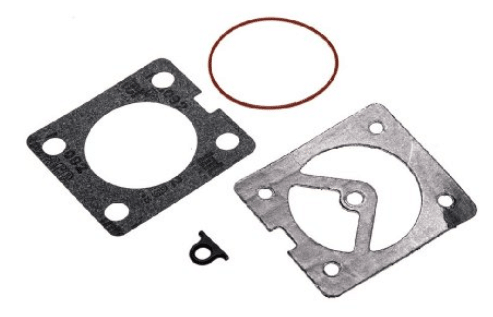When an air compressor runs and runs and never shuts off, it’s telling you it has a problem!
As we have noted on a number of pages on this site, the reasons vary from compressor to compressor, but usually boil down to one or two of a few things.
What does it mean when an air compressor runs and runs? Aside from it’s broken, of course? First you want to diagnose the scenario.
For example, is the compressor running but not building any air pressure in the tank at all? This is telling you that likely the compressor motor is OK as it’s running, probably the compressor pressure switch is working OK, otherwise the air compressor wouldn’t have come on, when there was little or no air in the tank either. You should be able to tell if the pump is running – hasn’t lost the drive connection to the motor for example – by carefully touching (with glove on) the pump head which will likely be quite hot. You should be able to feel that pump running.
All this is telling us that likely the problem is in the pump. If it’s not drawing in air – you can check the intake carefully with a finger touch to feel if air is being pulled in.
Or, if the compressor is not pumping air into the tank can be checked by pulling the line from where it leaves the pump and runs to the tank. Feel if there is lots of air coming out when the pump is cycling – enough to blow your finger off the port?
That points to pump valves and you will not have good intake or good outflow from the pump if the pump valve itself is the problem.

How about this scenario; when an air compressor runs and runs and builds only a small amount air in the tank, or reaches a level – say 65 PSI – and stays there, and the pump just keeps running and the tank pressure goes no higher?

This scenario can be caused by a few things, but the single most frequent issue here is that there is a gasket inside the pump that stops air flow from the low pressure to the high pressure side of the pump, and that gasket is letting go and allowing air to flow across at whatever pressure the tank gets to before the pressure rises no higher.
Take a few minutes and read the other pages on this site about the issues in the air compressor when it runs and runs and does not build pressure for many additional tips and things to check.

Hi Willy, I have a Craftsman 220V twin-cylinder single-stage oil-less compressor. The model number is 919.152812, and from what I can tell the motor may have been made by Devilbiss or Speedaire.
The issue is that the compressor won’t seem to build pressure past about 60psi. When the switch is on, the compressor will run seemingly forever without shutting itself off! I have tried a new gauge to make sure the existing one is accurate, and it shows the same ~60psi. I’ve also checked the safety valve and it seems to work fine when I pull its ring. I haven’t checked the check valve though.
The air filter looks clean, and when I remove the cover I can feel both pistons (using a large piece of paper) generate suction. I don’t think I feel any air coming out of them. There are a couple of tiny leaks coming out of the globe valve, but nothing that I would think prevents the compressor from building proper pressure!
What should my next troubleshooting step be?
Thanks!
Chris
Hello Christopher. We applaud you for the diagnostic work you have done on your air compressor so far. A little farther along the page there are links to other reasons why an air compressor will not stop running. One of those is: http://fix-my-compressor.com/compressor-will-not-build-pressure/ . Probably be good to read this one and the others as the other things to be checked are noted there.
I did read that prior to posting here. Because my compressor is a single-stage, I’m not sure what I can take away from it. I can certainly try testing the check valve, but the compressor maintains pressure when shut off and restarts with ease, even when the tank is pressurized to 60psi.
Should I also suspect the pressure valve?
Is the compressor pulling air into the intake port? Is it pushing air out of the port that has the pipe leading to the tank? What your compressor symptoms suggest are bad valves or gaskets inside the pump.
Willy, I took a photo this morning. Everything seemed to be normal, though the bolt holding the cooling fan was a touch loose.
Had to buy some Torx screwdrivers in order to get the top cover off. Everything looks fine, though the bolt holding the cooling fan on was a touch loose.
It’s definitely pulling air into the intake port, though I haven’t disconnected any of the steel pipes yet. Because this is a twin-cylinder pump, do I just toss a coin and pull one of the heads off to look? I thought I remember you saying (on another page) that removing the heads will destroy the gaskets in the process, making it hard to diagnose if it was actually a gasket problem.